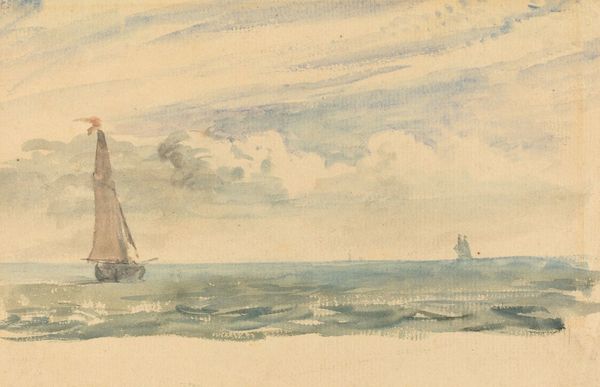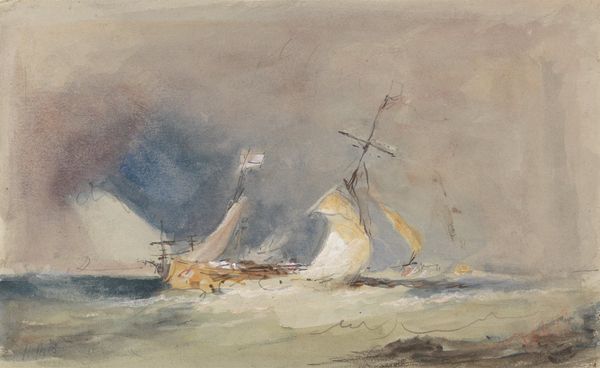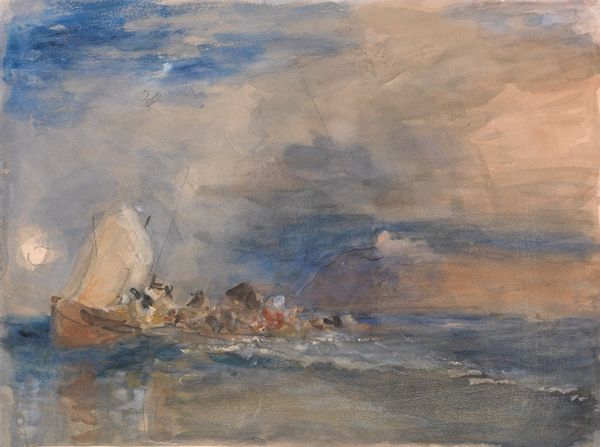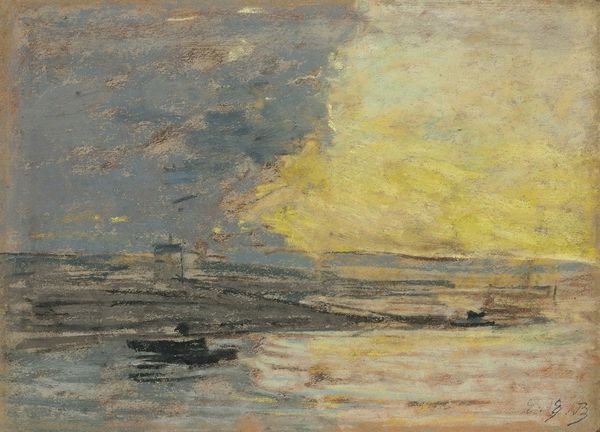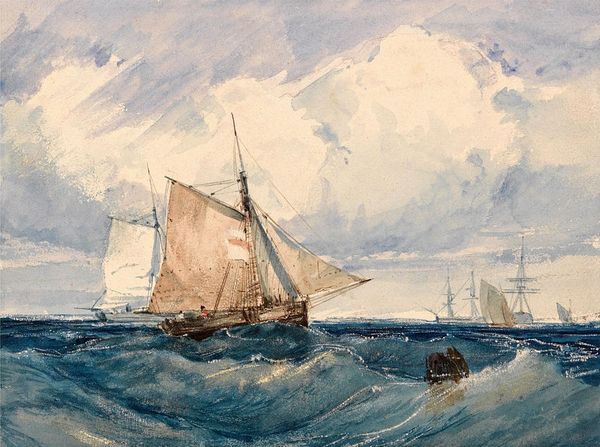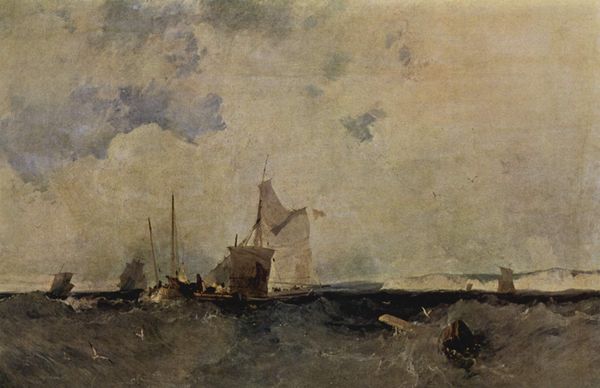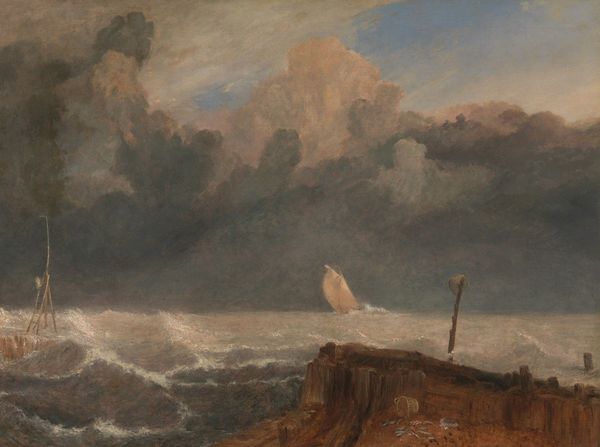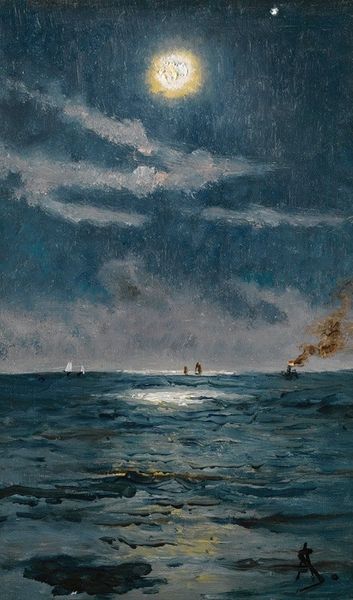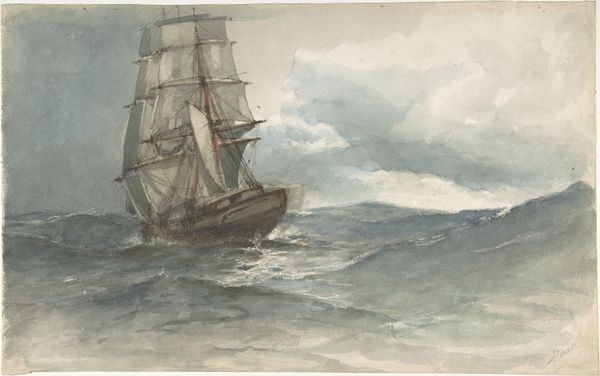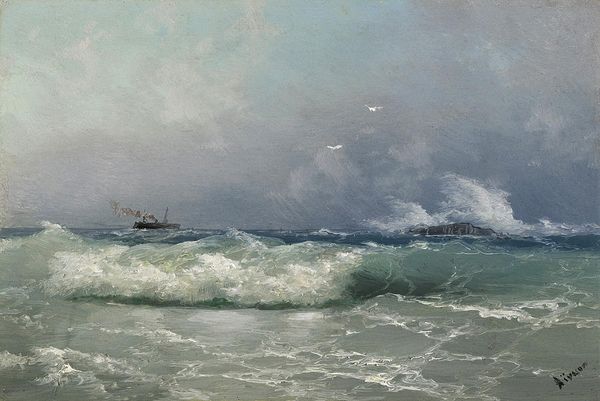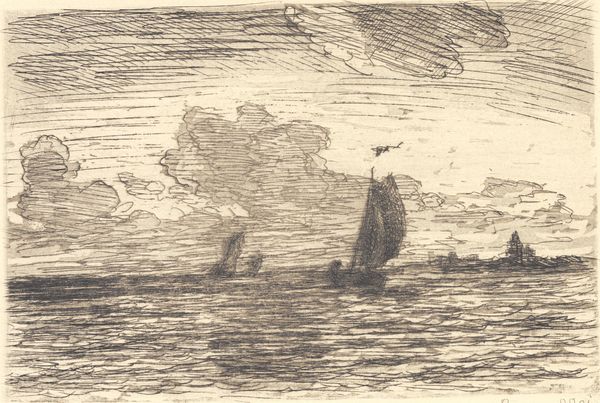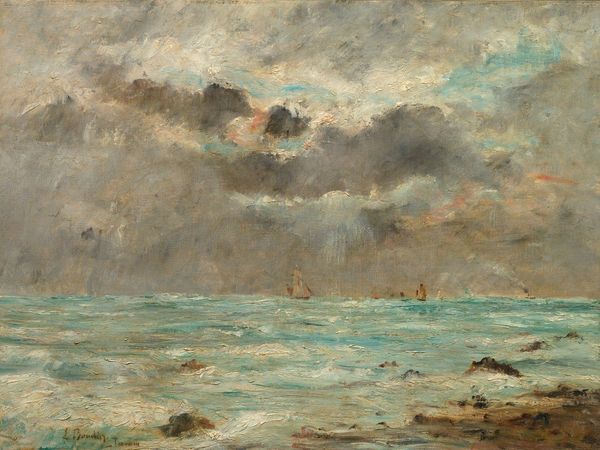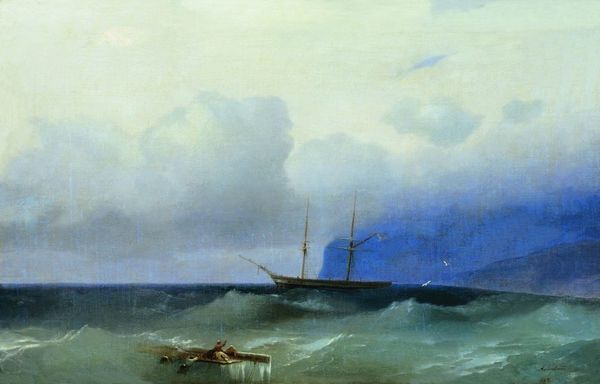
plein-air, watercolor
#
plein-air
#
landscape
#
oil painting
#
watercolor
#
romanticism
Copyright: Public Domain: Artvee
Editor: Here we have Turner’s "A Paddle-steamer in a Storm," dating from about 1841. It seems to be worked primarily in watercolor. I find it quite dramatic and unsettling, like nature's about to swallow that tiny steamboat whole. What strikes you when you look at this work? Curator: Formally, what arrests my attention is the dissolution of solid form. Consider the blurring of the boundaries between the sky and sea. The pigment seems less applied, more exhaled onto the surface. Note also the indistinct mass of the steamer, a series of calligraphic marks hinting at rather than defining structure. Editor: So, it’s almost like the storm itself is the subject, more so than the ship? Curator: Precisely. The conventional subject, a boat, serves more as a foil. Turner here presents us with an essay on the power, or the sublime, invested in a seascape; a pure essay in formal equivalence between external weather and internal, psychological experience. Note how he deployed loose brushwork to describe churning clouds, contrasting their opacity with the transparent washes in the sea below. Editor: The way you describe the paint application, especially exhaled, is very evocative. It emphasizes the immediate feeling of the work, rather than any precise rendering. I also see what you mean about formal equivalence—that’s a great way to put it! Curator: Turner, in his masterful stroke, transforms mere visual elements into carriers of emotive power. We understand a formal study of the materiality that invites us into a state of heightened receptivity and thought.
Comments
No comments
Be the first to comment and join the conversation on the ultimate creative platform.

